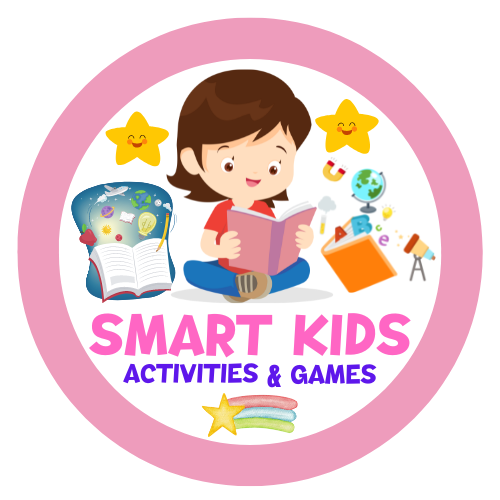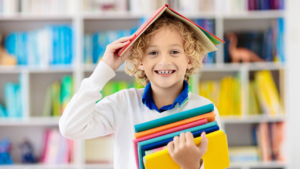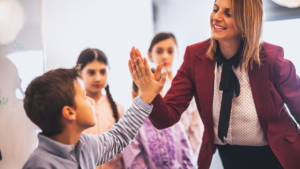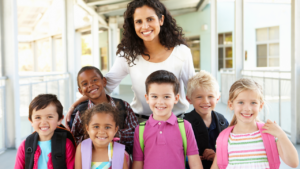Celebrating student achievement is a vital component of a positive classroom culture. Not only does it make students feel good, but it also has a profound impact on their memory, learning, motivation, and cognitive functions. There are numerous ways to celebrate student success, ranging from simple gestures like high-fives to more elaborate activities like celebration tunnels. By personalizing praise, sharing the success, and rewarding effort, teachers can create meaningful and inclusive celebrations. It is also important to celebrate the diversity of students by incorporating their backgrounds, cultures, and talents into the celebrations. By making the celebrations fun, consistent, and frequent, teachers can effectively create a culture of appreciation in the classroom.
Key Takeaways:
- Recognize student accomplishments by personalizing praise and acknowledging their efforts and goals.
- Share student success by displaying their work, inviting parents and peers to view presentations or performances, and involving the school community through positive notes or emails.
- Reward student achievements by acknowledging their hard work and persistence, and offering certificates, stickers, or badges as incentives.
- Celebrate the diversity of students by honoring their different backgrounds, cultures, talents, and traditions. Incorporate multicultural materials and activities into the celebrations to promote inclusion, empathy, and awareness.
- Make celebrations fun and memorable by adding creativity, humor, and excitement. Allow student choice and voice in deciding how to celebrate, and organize interactive activities such as class parties, trivia games, or dances.
Personalize the Praise to Boost Student Motivation
Personalizing the praise is a powerful way to celebrate student achievement and enhance their motivation. Instead of generic compliments, teachers should provide specific and sincere feedback that recognizes the individual strengths, efforts, and goals of each student. By doing so, teachers can create a personalized learning environment that nurtures the growth mindset and highlights the importance of the student’s learning process and personal growth.
When praising students, it is essential to go beyond surface-level acknowledgments and delve into the unique qualities that make each student special. By identifying and highlighting the specific strengths and accomplishments of a student, teachers can foster a sense of pride and achievement that motivates the student to continue working hard and striving for excellence.
“Your dedication and perseverance in solving complex mathematical problems is truly commendable. You have a remarkable ability to think critically and apply your knowledge. Keep up the excellent work, and I have no doubt you will achieve your goal of becoming a successful mathematician!”
This personalized approach to praise not only boosts student motivation but also reinforces the growth mindset. By shifting the focus from the outcome to the learning process, students understand that effort, practice, and resilience are key components of success. Through personalized praise, students develop a deeper understanding of their abilities, leading to increased confidence and a willingness to take on new challenges.
Teachers can further personalize praise by aligning it with the student’s goals and aspirations. By highlighting progress toward specific targets, teachers can motivate students to stay focused and determined on their educational journey. Whether it’s improving writing skills, mastering a difficult concept, or achieving a certain grade, acknowledging progress and linking it to individual goals provides students with a clear sense of direction and purpose.
Personalizing the Praise: Key Takeaways
- Provide specific and sincere feedback that recognizes individual strengths, efforts, and goals.
- Go beyond generic compliments and acknowledge the unique qualities of each student.
- Shift the focus from the outcome to the learning process to reinforce the growth mindset.
- Align praise with the student’s goals and aspirations to provide a clear sense of direction and purpose.
By personalizing praise and recognizing the individuality and efforts of each student, teachers can create a motivating and supportive classroom environment where students strive for continuous growth and success.
| Benefits of Personalized Praise: | Examples |
|---|---|
| Boosts student motivation | “I’m impressed by your meticulous research and insightful analysis. Your commitment to excellence inspires us all!” |
| Cultivates a growth mindset | “You’ve shown great improvement in your reading comprehension skills. Your hard work and dedication are paying off!” |
| Enhances confidence and self-esteem | “Your creativity and originality in your art projects are truly exceptional. You have a unique talent that sets you apart!” |
| Strengthens student-teacher relationships | “Your active participation in class discussions is commendable. Your thoughtful contributions make our classroom a vibrant learning community!” |
Share the Success to Increase Visibility and Value
Sharing the success of student achievements is a powerful way to increase their visibility and value within the school community. This not only celebrates their accomplishments but also motivates and inspires others.
One effective method is to display student work in prominent areas such as bulletin boards, websites, or newsletters. By showcasing their projects, artwork, or written assignments, students receive recognition for their hard work and talent. This public display validates their efforts and encourages a sense of pride and achievement.
Furthermore, inviting parents and peers to view student presentations or performances can enhance the celebration. This provides an opportunity for students to share their achievements with their loved ones, creating a stronger bond between home and school. Additionally, it allows peers to appreciate each other’s accomplishments, fostering a supportive and collaborative environment.
Another way to share the success is by sending positive notes or emails to families or administrators. This simple gesture not only highlights student achievements but also strengthens relationships within the school community. It shows that the school values the achievements of its students and congratulates them for their efforts. This personal touch enhances communication and collaboration between teachers, students, and parents.
By sharing the success of student achievements, teachers can create a culture of collaboration, communication, and celebration within the school community. It fosters a sense of belonging, instills pride, and motivates students to strive for further success. Celebrating student achievements not only recognizes their hard work but also inspires others to reach their full potential.
Reward the Effort to Foster Growth Mindset
Celebrating student achievement goes beyond applauding the final result; it involves recognizing the effort and improvement along the way. By acknowledging hard work, persistence, and the milestones students reach, we can foster a growth mindset and empower them to take charge of their own learning.
“It’s not about being the best, but about being better than you were yesterday.”
One effective way to reward effort is by presenting students with certificates, stickers, or badges for completing challenging tasks, overcoming obstacles, or reaching important milestones. These tangible tokens of recognition serve as symbols of accomplishment, reminding students of their progress and inspiring them to continue their journey of growth.
By rewarding the effort, we instill in students a sense of agency, teaching them that their hard work and persistence are valuable and worth celebrating. This approach promotes a growth mindset, where students embrace challenges, view setbacks as opportunities for learning, and develop a belief in their own ability to improve.
Benefits of Rewarding Effort:
- Encourages a growth mindset
- Builds confidence and self-esteem
- Fosters intrinsic motivation
- Develops a sense of agency
By rewarding students’ effort, we not only acknowledge their hard work but also inspire them to strive for continuous improvement. This fosters a growth mindset and empowers students to take ownership of their learning, creating a positive and nurturing environment where achievement is celebrated at every step.
| Rewards | Benefits |
|---|---|
| Certificates | – Reinforce a sense of accomplishment – Boost self-confidence – Provide a visual reminder of progress |
| Stickers | – Encourage pride in achievements – Foster a sense of belonging – Can be used as tangible symbols of progress |
| Badges | – Recognize specialized skills or accomplishments – Improve motivation and engagement – Promote goal-setting and effort |
Celebrate the Diversity for Inclusion and Awareness
When recognizing student achievements, it is crucial to celebrate the diversity that exists within the classroom. By honoring different backgrounds, cultures, talents, and traditions, teachers can create an environment that promotes inclusion, empathy, and awareness.
One way to do this is by incorporating multicultural materials into the curriculum. By using books, videos, and other resources that represent various cultures and perspectives, students can gain a better understanding and appreciation of the world around them.
Furthermore, teachers can organize activities and celebrations that showcase the talents and traditions of different students. This not only allows students to feel a sense of pride in their heritage but also educates their peers about different cultures.
“Inclusion is not bringing people into what already exists, it is making a new space, a better space for everyone.” – George Dei
By celebrating diversity, teachers foster an inclusive classroom environment where all students feel valued and respected. This not only enhances their learning experience but also creates opportunities for cross-cultural connections and friendships.
Benefits of Celebrating Diversity:
- Promotes a sense of belonging among students
- Fosters empathy and understanding
- Encourages cultural appreciation
- Inspires open-mindedness and acceptance
- Prepares students for a diverse world
Ultimately, celebrating the diversity of students is vital for creating an inclusive and aware classroom where all students can thrive.
Make Celebrations Fun and Memorable
Celebrations of student achievement should be a time of fun, creativity, and excitement. By infusing humor and enthusiasm into these celebrations, teachers can create an atmosphere that students will cherish and remember for years to come. One way to add an element of enjoyment to the festivities is by offering students a choice and voice in deciding how to celebrate their accomplishments. This not only increases engagement but also empowers students to take ownership of their achievements.
Class parties are a popular choice for celebrating student success. They provide an opportunity for classmates to come together, bond, and share in the excitement of their peers’ accomplishments. From themed decorations to delicious treats, class parties can be a memorable way to celebrate collective achievements.
Trivia games are another fantastic way to inject excitement into celebrations. Students can put their knowledge to the test and compete in a friendly and engaging environment. Whether it’s a subject-specific quiz or a general knowledge game, trivia challenges are sure to keep everyone entertained and create lasting memories.
And who can resist the joy of dance? Organizing a dance party to celebrate student achievement is not only a fantastic way to let loose and have fun but also a great opportunity to showcase creativity and self-expression. From popular dance styles to cultural dances, there are endless possibilities to create a memorable celebration on the dance floor.
“Celebrations should be a time of enjoyment, where students can let their hair down and celebrate their accomplishments in a memorable way,” says Peter Johnson, an experienced educator. “By incorporating elements of fun, creativity, and choice, we can create celebrations that not only acknowledge achievements but also leave a lasting positive impact on our students.”
By making celebrations fun and memorable, teachers can ensure that students not only feel recognized for their accomplishments but also have a meaningful and enjoyable experience. Through class parties, trivia games, and dance parties, these celebrations become more than just formal acknowledgments – they become cherished moments of laughter, joy, and celebration.
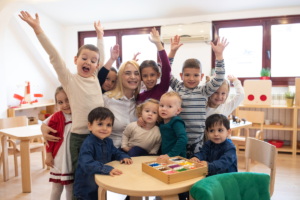
Keep Celebrations Consistent and Inclusive
When it comes to celebrating student achievement, consistency and inclusivity are key. Teachers should establish regular and frequent celebrations to recognize both academic and non-academic accomplishments. By organizing weekly or monthly celebrations, educators can highlight the achievements of each student, ensuring that no milestone goes unnoticed.
In order to create a culture of celebration and appreciation, it is important to acknowledge achievements with positive notes or tokens. These can serve as tangible reminders of success and reinforce the value of hard work. By consistently recognizing student accomplishments, teachers foster an environment where every student feels valued and recognized for their efforts.
Furthermore, celebrating the diversity of achievements and backgrounds enhances inclusivity in the classroom. Teachers can incorporate various cultural traditions, talents, and perspectives into the celebrations. By doing so, students develop a greater understanding and appreciation for one another, promoting empathy and respect.
Consistency and inclusivity in celebrations not only create a positive and supportive classroom culture, but also motivate students to continue striving for success. These celebrations serve as reminders of progress, rewarding effort and fostering a growth mindset.
Conclusion: Celebrating Student Achievement for a Positive Classroom Culture
Celebrating student achievement is vital in creating a positive classroom culture that promotes motivation, confidence, and engagement. By recognizing and appreciating students’ accomplishments, we foster inclusivity and meaningful celebrations that bring joy and a sense of personalization to the learning environment.
Teachers play a crucial role in sharing and celebrating the success of their students. By showcasing student work, inviting parents and peers to participate, and sending positive notes or emails, we create a strong sense of community and collaboration within the school.
It is important not only to celebrate the final outcome but also to reward the effort and growth that students demonstrate. By acknowledging their hard work, persistence, and improvement, we foster a growth mindset and instill a sense of agency in students’ learning journeys.
Moreover, celebrating the diversity of our students is crucial for creating an inclusive and empathetic classroom. By honoring their backgrounds, cultures, talents, and traditions, we promote awareness and respect, allowing every student to feel valued and appreciated.
To make celebrations enjoyable and memorable, we can infuse creativity, humor, and student voice. Class parties, trivia games, and interactive activities add the element of fun, ensuring that celebrations become cherished moments for students to remember.
Consistency is key in fostering a culture of celebration and appreciation. By making celebrations frequent and regular, we create an environment where students expect and anticipate recognition for their achievements, leading to increased motivation and engagement.
In conclusion, celebrating student achievement is essential for cultivating a positive classroom culture. Through personalization, inclusivity, and consistency, we can create a supportive and empowering learning environment that nurtures the motivation, confidence, and engagement of all students.
FAQ
How can I celebrate student achievement in my classroom?
There are many ways to celebrate student achievement, including personalized praise, sharing the success, rewarding effort, and celebrating diversity. By incorporating these strategies, you can create meaningful and inclusive celebrations that boost motivation, confidence, and engagement among students.
Why is personalizing the praise important in celebrating student achievement?
Personalizing the praise by giving specific and sincere feedback that recognizes each student’s strengths, efforts, and goals is important because it boosts student motivation and cultivates a growth mindset. By emphasizing the learning process and growth, students are encouraged to continue their efforts and strive for improvement.
How can I share the success of student achievements?
Sharing the success of student achievements can be done by displaying student work on bulletin boards, websites, or newsletters, and inviting parents and peers to view presentations or performances. Sending positive notes or emails to families or administrators can also involve the school community in the celebrations and foster a sense of pride among students.
Why is it important to reward the effort in celebrating student achievement?
Rewarding the effort in celebrating student achievement is important because it acknowledges hard work, persistence, improvement, and milestones. By giving certificates, stickers, or badges for completing challenging tasks or reaching goals, students develop a growth mindset and a sense of agency over their learning.
How can I celebrate the diversity of my students when recognizing their achievements?
To celebrate the diversity of students, you can honor and respect their different backgrounds, cultures, talents, and traditions. Incorporating multicultural materials, activities, and celebrations promotes inclusion, empathy, and awareness among students, fostering a positive and inclusive classroom environment.
How can I make celebrations of student achievement fun and memorable?
To make celebrations fun and memorable, you can add creativity, humor, and excitement. Offering student choice and voice in deciding how to celebrate can also increase engagement and enthusiasm. Class parties, trivia games, dances, or other interactive activities can make the celebrations enjoyable and leave a positive impact on students.
Why is it important to keep celebrations consistent and inclusive?
Keeping celebrations consistent and inclusive is important because it establishes a regular and frequent recognition of both academic and non-academic achievements. By having weekly or monthly celebrations that highlight each student’s achievements and using positive notes or tokens to acknowledge accomplishments, you create a culture of celebration and appreciation in the classroom, ensuring that every student feels valued and recognized.
Why is celebrating student achievement important for a positive classroom culture?
Celebrating student achievement is essential for creating a positive classroom culture. By personalizing the praise, sharing the success, rewarding effort, celebrating diversity, making celebrations fun and consistent, teachers can ensure meaningful, inclusive, and enjoyable celebrations. This boosts motivation, confidence, and engagement among students while creating a supportive and empowering learning environment.
Source Links
- https://www.teachstarter.com/us/blog/11-ways-to-celebrate-student-success-2/
- https://prestoplans.com/8-ways-teachers-can-celebrate-student-success/
- https://www.linkedin.com/advice/3/what-your-favorite-ways-celebrate-student-achievement

